Key takeaways:
- Understanding DNA reports unfolds insights into ancestry, health, and personal identity, revealing connections to heritage and potential health risks.
- DNA testing transforms genealogy by linking individuals to distant relatives and uncovering family histories, emphasizing the emotional significance of heritage.
- There are three main types of DNA tests: autosomal, Y-DNA, and mitochondrial DNA, each serving distinct purposes in revealing lineage and ancestry.
- Interpreting DNA results requires caution and verification, as well as efforts to simplify complex genetic terminology, fostering empowerment and deeper familial connections.
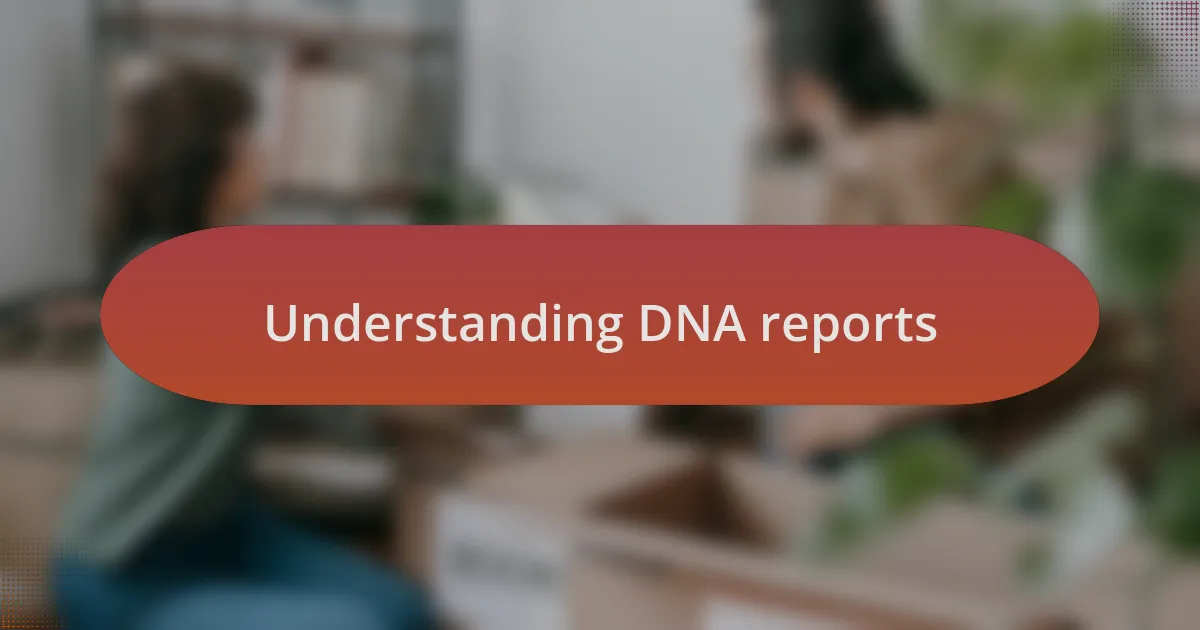
Understanding DNA reports
Understanding DNA reports can feel a bit overwhelming at first glance. I remember opening my first report and instantly being flooded with a mix of excitement and confusion. With so many categories like ancestry, health risks, and traits, it can be hard to know where to start. What if I told you that taking the time to carefully unpack each section can reveal fascinating insights into your lineage and even your health?
When I dove into the ancestry section, it was like unearthing hidden treasures. I discovered connections to regions I had never considered in my family history. It made me think: how often do we overlook the stories embedded in our genetic makeup? Each percentage of ancestry felt like a clue leading me deeper into my heritage, connecting the dots in ways I had never imagined.
At the same time, I found myself grappling with the health insights. While some results were reassuring, others raised questions that lingered in my mind. How do I navigate potential risks? It sparked a journey of proactive health management, as I realized that knowledge is empowering. Understanding DNA reports is not just about what they say; it’s about how we choose to respond to that information and embrace new paths in our lives.
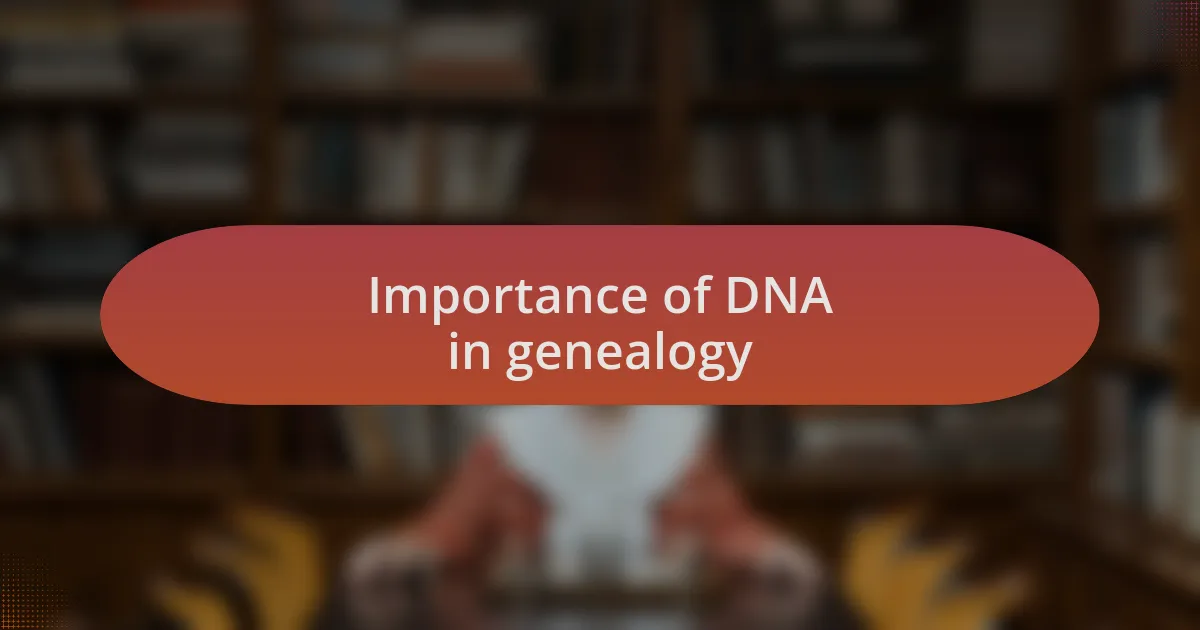
Importance of DNA in genealogy
The role of DNA in genealogy is truly transformative. I vividly recall the moment I discovered how my DNA results could connect me to distant relatives I had never met. It was as if a door had opened to a whole new world of family stories and shared experiences. Isn’t it fascinating to think that a simple test could reveal the family ties that have been hidden for generations?
DNA testing not only helps trace lineage but also clarifies the often tangled roots of our ancestry. When examining my results, I found significant percentages that pointed to origins in regions where my ancestors had lived centuries ago. This revelation made me reflect on the cultural identities and traditions that shaped my family. How many traditions might I still carry today that are echoes of those lives long past?
The emotional weight of understanding one’s heritage through DNA is profound. Each match on my family tree felt like a personal connection to someone who shared not just blood but also parts of my identity. The idea of being part of a broader tapestry of human history is deeply moving. How often do we think about our place in this vast lineage? DNA gives us a tangible link to our past, helping us to appreciate the legacies we inherit.
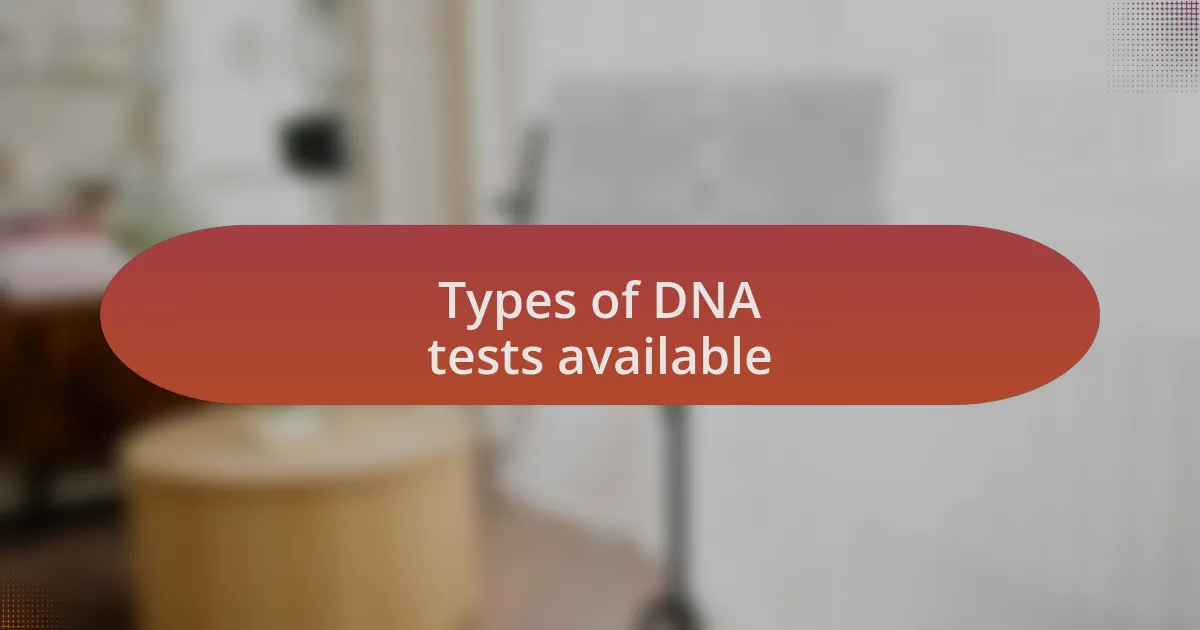
Types of DNA tests available
When it comes to DNA tests available, there are three primary types you might consider: autosomal, Y-DNA, and mitochondrial DNA tests. Autosomal tests are the most popular; they analyze chromosomes inherited from both parents and can reveal connections across many generations. I remember testing with one of these and being pleasantly surprised to find cousins that I never knew existed!
Y-DNA tests are specifically for tracing paternal lineage since only males have a Y chromosome. This means that if you’re a male and interested in understanding your father’s side of the family, this test can be particularly enlightening. Can you imagine the stories that might unfold from exploring your paternal roots? I found it intriguing to map out my surname’s journey through history using Y-DNA.
On the other hand, mitochondrial DNA tests trace maternal ancestry, which is fascinating for anyone wanting to delve into their maternal lineage. As a woman, I felt a unique connection to my maternal ancestors when I explored this type of testing. What if each of us carried not only our own stories but also the unseen narratives of our mothers, grandmothers, and beyond? That’s the beauty of DNA; it connects us to generations in ways we may never have considered before.
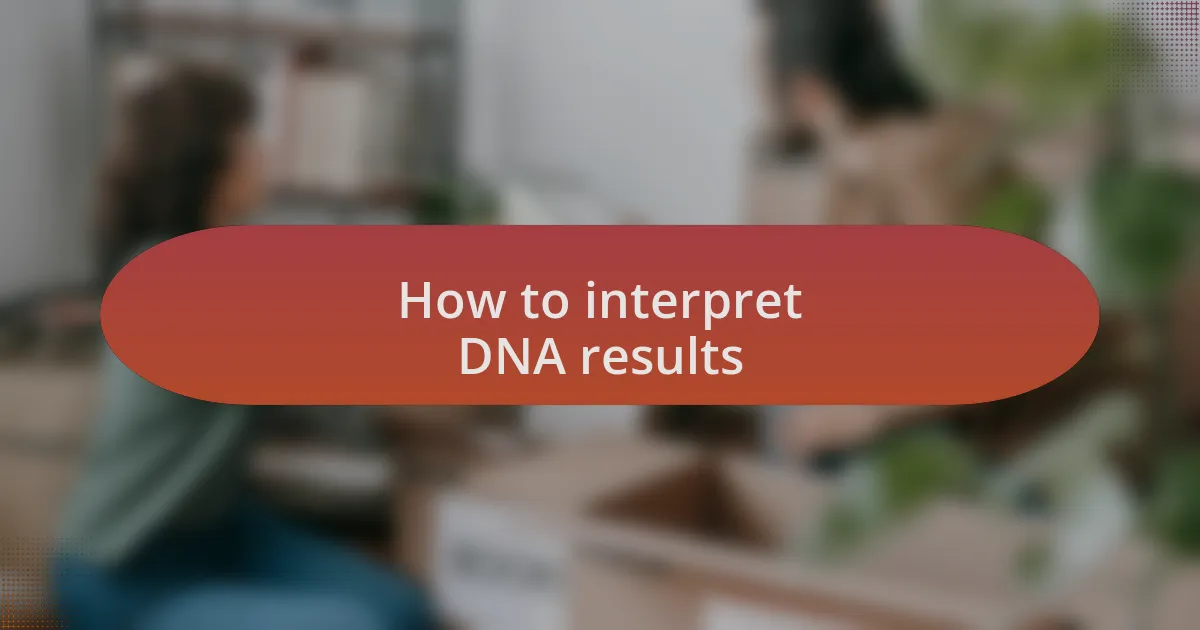
How to interpret DNA results
Interpreting DNA results can feel like unveiling a family mystery, but it’s important to approach them with a mix of curiosity and caution. When I first received my results, I was confused by the percentages of ethnicities listed. It took some time for me to understand that these estimates are based on broad population data, not exact science. Have you ever felt the excitement of connecting with a piece of your history, only to wonder how accurate that connection really is?
One vital aspect to consider is the match list that shows potential relatives. This section can be overwhelming at first glance, as it includes names and estimated relationships I never expected. When I saw my first match, I felt a spark of excitement—could this be a long-lost cousin? It’s essential to remember that while these connections can lead to exciting revelations, they require careful follow-up and verification through traditional genealogical methods to fully understand our shared lineage.
Additionally, I found it insightful to explore the genetic traits section, which reports on physical characteristics and potential health risks. Discovering traits that I didn’t even know were genetically influenced felt like a journey towards self-discovery. For instance, realizing I had a predisposition for certain traits sparked deeper conversations with family members about how our identities are shaped, not just by our experiences but also by our genetic legacy. Isn’t it fascinating to think about how our genes carry stories from generations past?
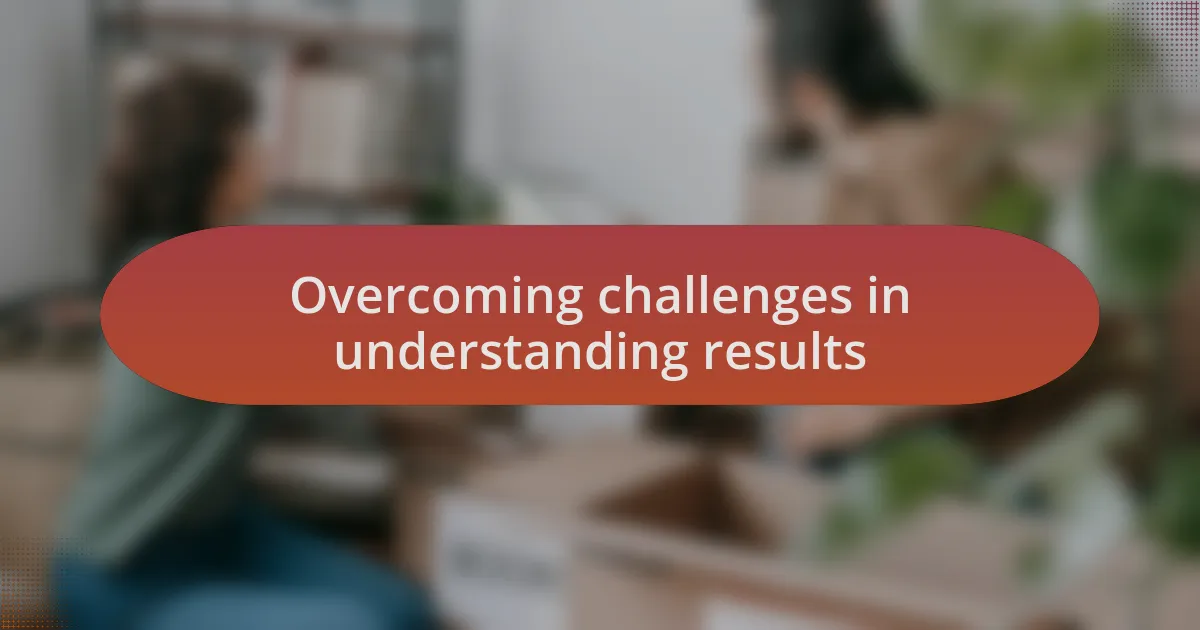
Overcoming challenges in understanding results
One of the biggest hurdles I faced was deciphering medical terms and genetic jargon. Initially, I felt like I was studying a foreign language, with terms flying over my head. I remember staring blankly at the phrase “single nucleotide polymorphisms” and thinking, “What on earth does that mean?” But as I dove deeper into resources and articles, I realized that breaking down these terms into simpler concepts made a world of difference. What if I had given up before gaining that understanding?
Navigating the sheer volume of information was another challenge. The result reports felt like a treasure trove of data, but it was easy to get lost in all the details. I recall spending hours scrolling through different sections, feeling overwhelmed by the possibilities and connections. To tackle this, I started organizing my findings in a dedicated notebook, creating summaries and highlighting areas of interest. It made the vastness more manageable and turned the experience into a structured journey rather than an endless maze.
Perhaps one of the most rewarding aspects of overcoming these challenges was the sense of empowerment that came from understanding my results. As I pieced together my ancestry and health data, I felt a renewed connection to my roots. Have you ever felt that rush when everything finally clicks? Sharing these insights with family sparked meaningful conversations, as we unraveled not just our past but potential implications for our future. Each challenge transformed into a stepping stone, leading me towards a clearer picture of who I am.